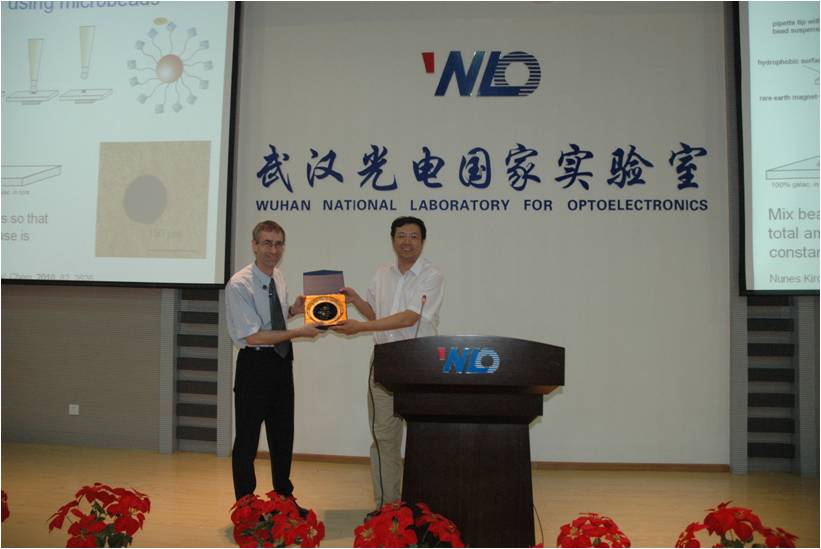Title:Application of scanning electrochemical microscope to the analysis of functional materials
Speaker: Prof. DR. GUNTHER WITTSTOCK
Time:Aug. 18. 2011.10:00-11:00AM
Venue: Room A101 At WNLO
Abstract:
Scanning electrochemical microscopy (SECM) is a scanning probe technique that uses an amperometric microelectrode to sense localized fluxes of reagents or products of reactions taking place at solid-liquid, liquid/liquid or gas/liquid interfaces. The principle ideas of the technique will be illustrated. In the past we have worked intensively on the activity imaging of immobilized enzymes. Recently, the scope of the studies was extended to materials relevant for energy conversion, e.g. dye sensitized solar cells and oxygen reduction catalysis for (bio) fuel cells. The initial attempts are currently expanded to widen the scope of investigated materials and imaging modes applicable. The SECM feedback and generation-collection modes were used to investigate the regeneration of photoexcited dye cations at the semiconductor/electrolyte interface in a dye-sensitized solar cell (DSSC). When investigated more complex reactions that come into the focus when dealing with solar fuel generation, fuel cells or DSSC are discussed. They include the combination of external mass transport and internal mass and charge transport and the intrinsic reactivity of the reaction centers within the porous materials.
Biography:
Gunther Wittstock studied chemistry at the University of Leipzig (1986-1991) and obtained a PhD in Analytical Chemistry in 1994 at the same University. From 1992-1993 he spent 11 months at the University of Cincinnati, Cincinnati, OH, USA with William R. Heineman. He prepared his habilitation at the Wilhelm Ostwald Institute of Physical and Theoretical Chemistry in Leipzig where he used surface spectroscopy and scanning probe techniques to investigate localized surface reactivity mainly at solid/liquid interfaces. During that time he was recipient of a Humboldt fellowship and spent the time at the Technical University of Munich. He became Full professor of Physical Chemistry at the University of Oldenburg in 2001 where he runs the laboratory of Electrochemistry and Condensed Matter Interfaces. The Wittstock group prepares and characterizes organized thin films and catalytically active surfaces with a wide variety of techniques (SECM, CLSM, AFM, voltammetry, PM IRRAS). He has authored 109+ peer-reviewed research papers and several book chapters. G.W. is head of the Center of Interface Science and programme coordinator of the corresponding PhD program at the University of Oldenburg. Currently, he serves as National representative for Germany in the International Society of Electrochemistry (ISE) and as Head of the Working Party of Electrochemical Research Institutions (AGEF).
